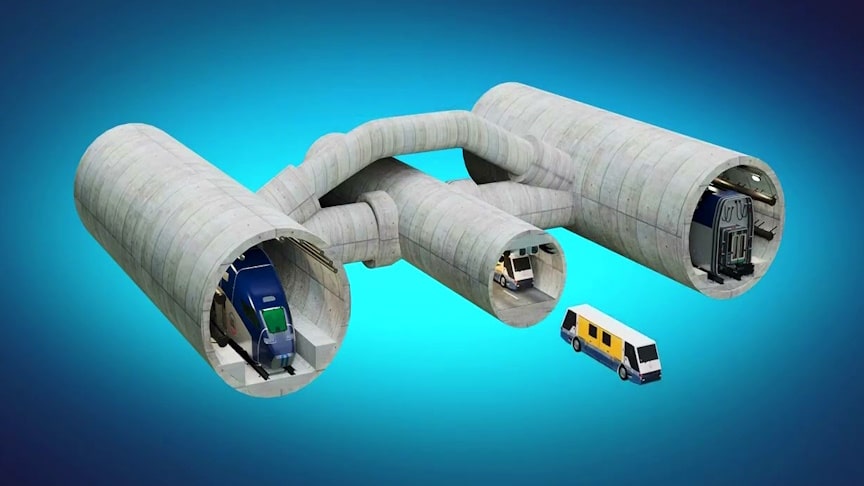The Channel Tunnel is a 50.46-kilometre railway tunnel beneath the English Channel that links Folkestone in the United Kingdom with Coquelles in France. Let’s explore why the Channel tunnel was built, its detailed design and also the construction secrets.
source.image: Sabin Civil Engineering
The tunnel has the longest underwater section of any tunnel in the world, at 37.9 km, and reaches a depth of 75 m (246 ft) below the sea bed and 115 m below sea level. It is the third-longest railway tunnel in the world. The Channel Tunnel is really three tunnels, running parallel to each other. Trains go through two larger tunnels, one running south from the UK to France, and one going north, from France to the UK. Watch the video from Sabin Civil Engineering:
A smaller service tunnel used for ventilation and access runs between the two train tunnels. The tunnels don’t run straight – they curve gently up and down or left and right. This is so they can run through the chalk strata. On average, the tunnels are 45m below the sea bed. The two larger tunnels are 7.6m wide.
Advertisement
They’re high enough to take a double-decker bus. The larger tunnels merge at two points under the sea called ‘crossovers’, where the trains change line. These crossovers are undersea caverns and they’re as wide and long as a cathedral. Power is delivered to the locomotives via an overhead line at 25 kV 50 Hz[94][95] with a normal overhead clearance of 6.03 m. All tunnel services run on electricity, shared equally from English and French sources.











